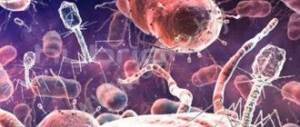In medicine, iron-based preparations have been used for more than a century . However, the first iron poisoning (at least documented) occurred only in the middle of the last century. Over time, the situation worsened, and by 1990, iron had become one of the main causes of poisoning in children under 6 years of age.
Since 1997, each product containing iron salts has been supplied with a warning about possible metal poisoning. In addition, other measures were taken, including limiting the amount of the drug given to patients, which resulted in a reduction in the percentage of iron poisoning.
Symptoms of Iron Poisoning
There are 5 stages in the development of the clinical picture, but the symptoms themselves and their development vary. The severity of the first stage symptoms usually reflects the severity of the poisoning as a whole; subsequent stages of symptom development occur only if the symptoms in the first stage were moderate or severe.
Stages of iron poisoning
Time elapsed since poisoning
Vomiting blood, profuse diarrhea, irritability, abdominal pain, drowsiness. In case of severe intoxication - tachypnea, tachycardia, arterial hypotension, coma and metabolic acidosis
Up to 24 hours apparent improvement (latent period)
Shock, convulsions, fever, coagulopathy and metabolic acidosis
Liver failure, jaundice, coagulopathy and hypoglycemia
Obstruction of the gastric or duodenal outlet due to scarring
Iron poisoning may be suspected after taking multiple medications (because iron is found in almost all medications) and in young children with access to iron with unexplained metabolic acidosis or severe hemorrhagic gastroenteritis. Children often share with each other, so it is also necessary to examine relatives and friends of young children who have ingested iron-containing substances.
Abdominal radiography is usually performed to confirm foreign body ingestion; this helps detect undissolved iron tablets or iron deposits. However, chewed and dissolved tablets, liquid iron-based preparations and iron in multivitamins cannot be detected by radiography. Serum iron, electrolytes and pH are determined 3-4 hours after ingestion. Symptoms that support the suspicion of iron toxicity include vomiting and abdominal pain, a serum iron concentration >350 mcg/dL (63 μmol/L), iron deposits visible on x-ray, or unexplained metabolic acidosis. Knowing the indicators of iron content, one can only assume poisoning, but one cannot accurately judge its presence. Total serum iron binding capacity (TSIBC) is in many cases an imprecise indicator and cannot be used to make a diagnosis of serious poisoning. The most accurate method involves sequential measurement of serum iron concentration, HC03 and pH, then jointly assessing the results and comparing them with the clinical status of the patient. For example, poisoning is suspected when there is an increased concentration of iron in the blood, metabolic acidosis, worsening symptoms, or, most often, some combination of these symptoms.
We have strict sourcing guidelines and only link to reputable sites, academic research institutions and, where possible, proven medical studies. Please note that the numbers in parentheses ([1], [2], etc.) are clickable links to such studies.
If you believe that any of our content is inaccurate, out of date, or otherwise questionable, please select it and press Ctrl + Enter.
Iron poisoning is the leading cause of death from poisoning in children. Symptoms begin with acute gastroenteritis, progressing to a latent period, then shock and liver failure. Diagnosis is based on measurement of serum iron, detection of radiopaque iron tablets in the gastrointestinal tract, or unexplained metabolic acidosis in patients with other symptoms suggestive of iron toxicity. If large quantities of iron are swallowed, the intestines are completely washed out and poisoning is treated with intravenous deferoxamine.
Many over-the-counter medications contain iron. Among these and prescription medications containing iron, the most common are ferrous sulfate (20% pure iron), ferric gluconate (12% pure iron), and ferric fumarate (33% pure iron). Children may mistake iron tablets for candy. Multivitamins for pregnant women contain iron and very often cause fatal poisoning in children. Children's chewable multivitamins contain little iron, and poisoning is rare.
We recommend reading: Agrimony - properties, treatment, reviews
Prognosis and treatment of iron poisoning
If there are no symptoms within the first 6 hours after ingestion, the risk of serious poisoning is minimal. If shock and coma develop within the first 6 hours, the risk of death is approximately 10%.
If radiopaque tablets are visible on an abdominal x-ray, intestinal lavage is performed with polyethylene glycol, 1-2 l/hour for adults or 24-40 ml/kg per hour for children until the visible iron accumulation disappears on a repeat x-ray. Gastric lavage is usually useless; deliberately induced vomiting empties the stomach more effectively. Activated carbon does not adsorb iron and is used only if other toxins have been ingested.
All patients with symptoms more severe than moderate gastroenteritis should be hospitalized. For severe poisoning (metabolic acidosis, shock, severe gastroenteritis, or serum iron concentration >500 mcg/dL), deferoxamine is administered intravenously to chelate free ions in the blood plasma. Deferoxamine infusion is carried out at a rate of up to 15 mg/kg per hour, titrating the dose according to blood pressure. Because both deferoxamine and iron toxicity can lower blood pressure, patients receiving intravenous deferoxamine also need intravenous hydration.
Stages of iron poisoning
How to help?
If dietary supplement tablets, vitamin capsules or any other iron preparations entered the body no earlier than three hours before symptoms of an iron overdose were noticed, that is, poisoning began, the first thing to do is to rinse the stomach.
If iron supplements have been taken previously, then rinsing does not make sense, but you can give a saline laxative or do an enema in order to remove unabsorbed iron from the body.
Emergency first aid for this type of poisoning involves calling an ambulance and administering antidotes to the victim. However, any medications that neutralize the effect of iron oxide should be given to a poisoned person only when there is complete confidence that iron poisoning has occurred.
It is not recommended to take any medications on your own if you have an iron overdose during pregnancy.
Which antidote will be safest, and which medication can quickly remove “excess” iron from a woman’s body in case of an overdose, can only be determined by a doctor after taking the appropriate tests, since there is no “universal pill” for expectant mothers. Pregnant drugs. which remove excess iron are selected individually.
Without resorting to taking medications, you can reduce the toxic effect with the help of warm milk; it is a natural remedy that neutralizes the activity of iron in the body.
The same should be done if poisoning with thyroid hormones occurs.
What can give off a metallic taste - video
Read further:
How long does alcohol intoxication and hangover last for the body ❶ ❷ ❸
Soda poisoning - how to treat, proper preparation of soda solution for children and adults
Analysis and diagnosis of salmonellosis - methods for children and adults
Ways to eliminate swelling after mosquito bites
How to use sodium thiosulfate to cleanse the body?
Article rating:
( 1 ratings, average: 5.00 out of 5)
Share with friends:
You may also be interested in:
Food poisoning in a child - symptoms and treatment methods
Bean poisoning
Egg poisoning: symptoms and treatment in adults and children
What to do if you are poisoned by bananas
Distinctive signs of excess iron
The characteristic symptoms of poisoning with preparations containing iron differ depending on the type of intoxication, that is, with a constant intake of this component in the body and, as a consequence, its chronic overabundance, the manifestations of deterioration in well-being will differ from the symptoms accompanying the acute development of the process of intoxication with this substance.
Chronic, persistent iron poisoning is characterized by symptoms that are often left without proper attention:
- Frequent and painful inflammatory processes in the urinary tract, bladder and kidneys, mistakenly mistaken for the consequences of drafts or infectious agents.
- Various types of pain in the heart, the development of coronary artery disease and aneurysm without the presence of objective prerequisites for these processes.
- The occurrence of neoplasms and hernias, mainly small tumors occur in the stomach and intestines, but can form in any other place.
- Frequent headaches.
- Almost constant grumpy and dissatisfied mood.
- Periodically occurring painful spasms in the kidneys and liver, accompanied by nausea.
Poisoning or an overdose of iron is just as difficult for the body to tolerate as a lack of this element; the symptoms of this condition are almost impossible to confuse with anything else, and help with an excess of iron should be provided immediately to avoid the development of complications.
Therefore, an excess of this element in the body is no less common than its deficiency, and taking into account. That iron, like many trace elements, tends to accumulate in cells, and when its amount reaches a critical threshold, a pathological condition develops with a number of symptoms, that is, poisoning.
The effect of overdose on the body
The main consequences of an excess of metal await a person after poisoning and the rehabilitation period. In old age, difficulties with the heart may arise, ischemia and tachycardia may appear, and the risk of heart attack and stroke increases due to vascular damage. After recovery, in the later stages, complications with the excretory system, malfunctions of the kidneys and urinary system are observed. In rare cases, acute liver cirrhosis and other diseases of the large gland occur. Failure of some organs means inevitable death.
The most dangerous consequence is the appearance of malignant tumors, which means the development of cancer. According to statistics, the stomach is considered a common place for such a tumor to appear.
What kind of poisoning can there be?
Iron is not a harmless component; you can consume foods and supplements with it in any amount. Poisoning with iron preparations begins at the moment when its amount in the body reaches 30-32 micrograms per kilogram of weight, and at 220-250 micrograms per kilogram a coma occurs, followed by death.
Poisoning with drugs containing iron can be chronic or acute. Chronic intoxication is characterized by the constant presence in the body of a higher level of iron than is acceptable. At the same time, the person constantly replenishes his “stock” and feels periodic ailments that do not particularly bother him.
We recommend reading: Sore throat from melon: why does this condition occur after consumption?
That is, in fact, toxic components are released from the pancreas and the person’s condition sharply, literally before our eyes, worsens.
Separately, doctors consider poisoning with poisons and chemicals containing iron and its compounds as a base, for example, from spring to autumn, gardeners often seek medical help due to poisoning with iron sulfate, which is used to control insect pests.
Without resorting to taking medications, you can reduce the toxic effect with the help of warm milk; it is a natural remedy that neutralizes the activity of iron in the body.
Do I need to stick to a diet?
Iron poisoning, like any other intoxication, certainly imposes certain restrictions on a person’s daily nutrition. But, unlike ordinary indigestion or previous gastrointestinal infections, the list of what foods and dishes you need to eat after treatment for this type of poisoning is simple - you can eat everything that does not contain iron or its content is minimal.
Of course, vitamin and mineral complexes containing this component and dietary supplements with it are completely excluded.
How much time you will need to spend monitoring the amount of iron in your food and avoiding most vitamins is completely individual and depends on the results of tests that will need to be taken repeatedly within six months after intoxication.
Diagnosis of excess iron
Urine blood tests are used to assess the level of iron in the body.
The average level of iron in urine is 10-25 µg/l, in blood plasma - 0.8-1.4 µg/l.
To diagnose iron levels, a combination of tests is used, which includes: determination of serum iron, free erythrocyte porphyrin, and total iron-binding capacity of serum.
In addition, the level of iron in bone marrow aspirates is assessed.
With excess iron in the body, the following are observed: a decrease in the level of serum iron (1.5-3 times) and an increased saturation of transferrin with iron.
Normal blood iron content and daily requirement
How to remove iron from the body? Toxicologists have developed a set of therapeutic measures to reduce it and reduce clinical manifestations.
- Special diet. Foods high in iron, the main supplier of which is meat, are removed from the menu. It is recommended to consume dairy products, which limit the absorption of this trace element. It is not recommended to take vitamin C.
- Elimination of alcohol - alcoholic drinks stimulate the absorption of iron from the intestines.
- Another method is bleeding 450 ml of blood. For patients with hemochromatosis, the procedure is performed 2 times a week.
- Cytopheresis is a modern treatment method. The patient's blood is taken, the cells are removed from it, and the plasma is returned during a subsequent infusion. The course of treatment consists of 10 procedures.
- Use of the drug "Desferal". According to its chemical structure, it consists of 2 claws capable of capturing and removing metal in urine.
It is recommended to drink water - it also helps eliminate excess microelements. In addition to these methods, you need to pay attention to the dishes in which you cook food - they should not be metal.
To summarize, let us recall the main points of the article. Iron poisoning at home most often occurs as a result of self-medication with anti-anemia pills and taking dietary supplements. Severe intoxication is observed in children with an overdose of tablets. Excess also accumulates in diseases associated with impaired iron metabolism in the body.
Symptoms of excess iron
Symptoms of excess iron are:
- icteric staining of the sclera, skin, tongue, palate;
- pigmentation on the palms, in the armpits, in places of old scars;
- itching;
- liver enlargement;
- headaches, increased fatigue, dizziness;
- heart rhythm disturbance;
- pale skin;
- loss of appetite and weight loss;
- weakness.
- iron deposition in organs and tissues, siderosis;
- heartburn, nausea, stomach pain, vomiting, diarrhea, constipation, ulceration of the intestinal mucosa.
- liver failure, fibrosis.
- suppression of cellular and humoral immunity.
If the excess is associated with hemochromatosis (a hereditary disease of iron metabolism), then at the onset of the disease for several years, patients may only complain of severe weakness, weight loss, fatigue, and decreased sexual function (men). Quite often there is pain in the joints, right hypochondrium, and atrophic changes in the skin. In the advanced stage of the disease, there is a classic triad of symptoms of iron excess: pigmentation of the skin and mucous membranes, diabetes and cirrhosis of the liver. Hemochromatosis can be combined with chondrocalcinosis, arthropathy, osteoporosis, tuberculosis, neuropsychiatric disorders, and porphyria cutanea tarda.
Damage to the intestinal mucosa, development of liver failure, nausea and vomiting are characteristic of cases of severe iron poisoning. Iron poisoning is the most common type of accidental poisoning in young children. Taking 3 g of iron sulfate or more can cause death to a child.
Symptoms of excess iron are:
Recently, drinking iron on a regular basis has become fashionable. Bloggers and “beauty experts” indiscriminately advise everyone to use it as an additive to a regular diet, but is this the case when it is permissible to engage in “self-medication” and prescribe such drugs to oneself? Maria Kirillova , Ph.D., general practitioner and medical cardiologist, to answer this question
How to determine your norm
Consultation with a doctor and tests are necessary to determine the individual norm per day. Uncontrolled use of iron supplements can cause side effects in the form of gastrointestinal disorders; liquid forms of the drug can damage teeth. In addition, only a doctor can take into account the interaction of iron with other supplements and medications, if any.
We recommend reading: Blockage (obstruction) of the lacrimal duct in newborns
Excessive iron consumption leads to systemic poisoning with damage to the liver, heart, lungs and hematopoietic system. After long-term use of the drug at a dosage of 20 mg/kg, signs of gastrointestinal poisoning may appear, and a dose exceeding 40 mg/kg leads to acute intoxication. But this rarely happens. In general, it is not recommended for healthy people to take iron supplements.
To drink or not to drink
Iron deficiency is more common in women than in men. The following groups of people are most susceptible to this condition:
- pregnant women
- women with irregular menstrual cycles, heavy menstruation, women with diseases of the genital organs (for example, leiomyoma)
- Small children
- teenagers
- people with impaired functioning of the stomach, intestines, hemorrhoids
- patients receiving chemotherapy or taking drugs that affect blood clotting.
Iron in food
The main dietary source of iron is animal products; they contain heme iron. The greatest amount of iron is found in beef, lamb, liver, and to a lesser extent in fish, chicken, and cottage cheese. What is important is not the level of iron in the product, but its bioavailability. Compared to animal products, non-heme iron contained in plant foods (vegetables, fruits, grains) has reduced bioavailability, and therefore lower absorption. This process requires certain conditions: for example, vitamin C enhances the absorption of iron, and substances such as tannic acid, which is part of tea, or phytates, found in some products, on the contrary, inhibit the absorption of iron.
Recently, drinking iron on a regular basis has become fashionable. Bloggers and “beauty experts” indiscriminately advise everyone to use it as an additive to a regular diet, but is this the case when it is permissible to engage in “self-medication” and prescribe such drugs to oneself? Maria Kirillova , Ph.D., general practitioner and medical cardiologist, to answer this question
You read a lot and we appreciate it!
Leave your email to always receive important information and services to maintain your health
What is the danger of exceeding the norm?
The level of iron in the body depends on age and gender (µmol/l):
- children under 2 years old - 7–8;
- child from 2 to 14 years old - 9–22;
- women - 9–30;
- men - 11–31.
The level of microelement is affected by height, weight, and the amount of hemoglobin in the blood.
This metal is not produced in the body. Depending on age and gender, a person should receive per day:
- women - 20 mg, and during pregnancy - 30 mg;
- men - 10 mg;
- children depending on age 4–18 mg;
- elderly people - 8 mg.
An increased amount of this element can also be obtained from water or by cooking food in a metal container.
Excess iron in the body can be a consequence of certain diseases.
- Hemochromatosis or hemosiderosis. The inherited gene provokes an increase in the absorption of the microelement in the intestine.
- Chronic hepatitis B and C.
- Liver tumors.
- Leukemia.
- Nephritis.
- Blockage of the pancreatic duct.
- Hemolytic anemia.
- Thalassemia.
Excess iron in the blood can also be due to other reasons:
- excessive use of iron supplements;
- injections of drugs for anemia;
- frequent blood transfusions.
Risk factors contributing to the accumulation of this trace element may be:
- its high content in drinking water;
- cooking in metal utensils.
The metal is often found in artesian wells, from which people regularly drink. Excess iron in water has the following negative effects on the body:
- promotes the deposition of all types of stones;
- thickens the blood;
- causes hardening of the vascular walls.
There is a lot of iron in those regions where the source of water supply is an artesian well. According to the law, its content in water should not exceed 0.3 mg per 1 dm³. In such areas, it is necessary to install filters in houses and apartments to remove metals.
Physiological blood loss during reproductive age protects women from trace element excess before menopause. But with age, after monthly blood loss stops, there is a risk of its accumulation, which is compared with this possibility in men.
Increased levels of iron in the blood of women are observed after taking oral contraceptives and hormonal drugs. During gestation, the amount of metal required increases for the formation and formation of organs. Excess iron during pregnancy is observed in the third trimester.
This microelement, so necessary and necessary for our body, poses a threat to humans in large doses. Its accumulation in the tissues of internal organs leads to their degradation.
Possible consequences of chronic excess iron in the body:
- liver failure;
- depressive effect on the heart - arrhythmia, myocardial infarction;
- varicose veins of the esophagus with bleeding;
- diabetes;
- cirrhosis of the liver.
This element accumulates especially quickly in the body of men. Research at Harvard has shown a relationship between excess iron in the body and the incidence of myocardial infarction. The higher the level of a trace element, the greater the risk of acute heart disease. Attacks of heart pain can appear as early as 30–35 years of age.
This metal is an oxidant, that is, it promotes the production of free radicals, which provoke the formation of malignant cells and accelerate the aging of the body. In women with breast cancer, the amount of the element is 5 times higher than normal. The risk of cancer increases in people suffering from hemochromatosis.
An excess of iron in the body is often attributed to a pathology of heredity. However, the reasons for exceeding this substance may be associated with certain diseases.
There are two types of problem:
- Primary - hereditary. It is also divided into types, depending on the gene that carries the pathology.
- Secondary. Formed in connection with the development of diseases.
Hemochromatosis is a hereditary, genetic disease. Manifests itself as a result of impaired iron metabolism. An increasing volume of absorbed element leads to a deterioration in metabolism. The disease does not reveal itself in any way; it is hidden. Around the age of forty-five, a large amount of the element accumulates in the body. When the disease manifests itself, the consequences most often become irreversible:
- Chronic liver diseases, severe cirrhosis.
- Leukemia and nephritis.
- Impaired functioning of the pancreatic duct.
For a hereditary disease, there are good reasons for early examination:
- Premature death of relatives from sudden cardiac arrest, liver cirrhosis, and other diseases associated with iron intoxication.
- Hyperpigmentation in the armpits, on the palms (in areas where there is no sun tanning)
- Biochemical blood test detecting the presence of ferritin and transferrin proteins
The cause of the disease may be factors affecting the quality of life:
- Consuming large amounts of supplements and taking medications containing this microelement.
- Frequent blood transfusions.
- Using medications to treat anemia.
Risk factors include:
- Presence of the element in drinking water.
- Cooking food in metal dishes.
The appearance of iron in drinking water can lead to:
- Thickening of the blood and hardening of the walls of blood vessels.
- Formation of stones.
The causes of excess iron in women should be discussed separately. During reproductive age, she loses a lot of blood. This helps her not suffer from excess substance. But as soon as menopause occurs, the risk of accumulation of this trace element becomes the same as in men.
Taking hormonal medications and oral contraceptives is another reason for increasing the amount of microelement.
During pregnancy, iron is required for the structure of fetal organs. Its excess can be observed in the third trimester.
The consequences of excess iron are very serious. An excess amount negatively affects the work:
- The liver is the filter of the whole body. If you notice the signs in a timely manner and begin treatment, the functioning of the vital organ will normalize. Otherwise, liver cells may be destroyed. This will lead to diseases: hepatitis and cirrhosis, necrosis, inflammation of the gallbladder.
- Kidneys. Excess trace elements are collected in the nephrons. They constantly poison the body. The filtration ability decreases, which provokes the occurrence of diabetes mellitus. Protective functions deteriorate, inflammatory processes develop.
- Impact on the nervous system. The brain suffers, the hypothalamus is overloaded. The head begins to hurt, thinking gradually slows down.
- Muscles. Excess iron causes fibers to break. Pain appears and muscle tone is lost. The heart is also a muscle. Poisoning it with iron can provoke the development of a micro-stroke or micro-infarction.
- Spleen. The main function of the organ is part of the metabolic processes occurring in the body, as well as the synthesis of iron. Gradually, iron is deposited on the walls of the organ, and inflammatory processes develop. They can penetrate nearby tissues.
Changes in nutrient balance during pregnancy are dangerous. Not only the expectant mother suffers, but also the child. From the mother's blood he receives all the substances he needs. Iron is an important component of hemoglobin. But in pregnant women, excess iron can provoke pathology of the placenta, to a greater extent the oxidation of free radicals, mitochondria in the placental cells die. Excess can cause gestational diabetes, which leads to miscarriage and subsequent development of infertility.
It is more difficult to treat the consequences resulting from excess iron than from deficiency. Especially if the accumulation in the body has occurred for a long time, or it is a hereditary disease. But if the patient consults a specialist in time, when it is possible to avoid the bitter diagnosis of damage to internal organs, then the prognosis may turn out to be quite favorable.
The daily requirement for iron is 18 mg for women (pregnant women - 20 mg, nursing mothers - 25 mg), 10 mg for men.
The reasons leading to excess iron in the body include:
- increased content of this microelement in drinking water;
- oxygen starvation, which can be caused by a high content of exhaust gases in the air of cities. In this case, the body tries to compensate for the lack of oxygen by increased production of hemoglobin;
- alcoholism;
- chronic liver diseases;
- taking high doses or long-term use of iron supplements;
- carrying out several blood transfusion procedures;
- carrier of the “Celtic gene”, which seems to force the body to accumulate iron. This gene is present mainly in Scandinavians;
- belonging to the male gender. Excess iron in the body occurs more often in men, since due to physiological characteristics women lose more blood and are therefore less susceptible to this condition (before menopause);
- hematological diseases.











